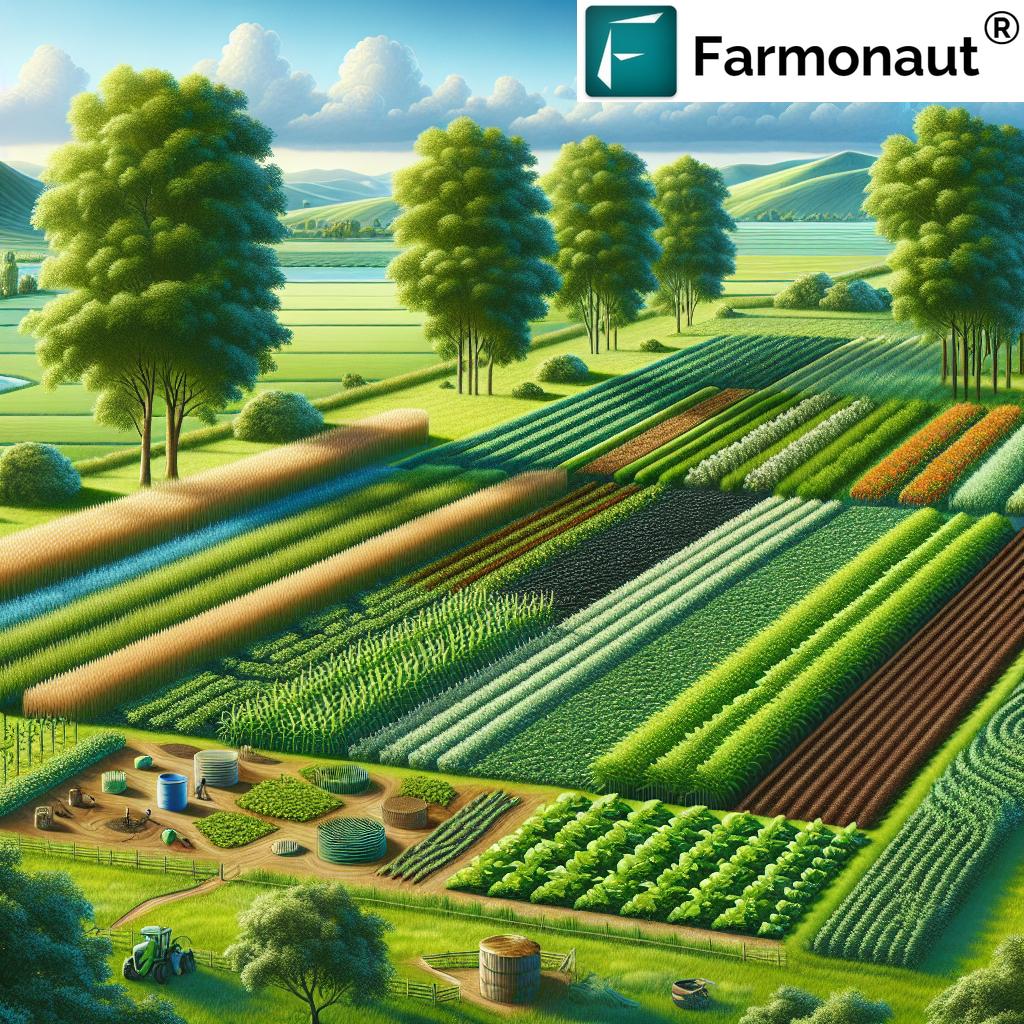Cotton Crop: 7 Sustainable Practices for Higher Yields
Introduction
Cotton, the soft and versatile Gossypium fiber, is a global pillar of textiles, comfort, and economic activity. Its popularity is not only owed to its natural properties but also to elaborate cotton cultivation practices that have developed over millennia. From soil preparation to harvesting, each stage is fundamental for achieving high yields and premium fiber quality. With modern agricultural challenges—like water scarcity, pest outbreaks, and environmental degradation—integrating sustainable cotton farming methods has never been more important.
This comprehensive blog covers the essential, research-backed, and practical 7 Sustainable Practices for Higher Cotton Yields. We’ll explore soil and water management, nutrient and weed control, pest and disease mitigation, effective harvesting, and innovations for sustainable production. Along the way, you’ll find actionable advice, industry insights, and strategic tips to improve your farm’s yield and environmental stewardship.
“Adopting crop rotation in cotton farming can increase yields by up to 20% while improving soil health.”
7 Sustainable Practices for Higher Cotton Yields
Integrating sustainability in cotton farming starts at the very first step—soil preparation—and continues through to pest control, harvesting, and even post-harvest management. Here, we detail the core cotton cultivation practices proven to lift both yield and environmental performance.
1. Optimal Soil Preparation and Cotton Planting
Optimal soil for cotton growth is a well-drained loamy soil with good aeration and a pH between 6.0 and 7.5. Begin with deep plowing to break compacted layers, enhance root penetration, and remove weed seeds embedded in the soil. Formation of raised beds or ridges ensures proper drainage—critical for early seed germination and overall cotton development.
- Conduct thorough soil testing to determine nutrient levels and salinity, ensuring suitable fertilization strategies.
- Prepare the land with a deep plowing (up to 30-35 cm) and create raised beds 10-15 cm high.
- Carry out planting when soil temperatures rise above 16°C (60°F); this boosts seed vigor and germination rates.
- Observe optimal spacing (typically 60-75 cm between rows and 30-40 cm between plants) to maintain healthy airflow and minimize disease risk.
Key Takeaways:
- Proper soil preparation improves nutrient availability and root development.
- Accurate planting enhances crop establishment, ultimately contributing to higher cotton yields.
2. Efficient Water Management and Irrigation in Cotton
Efficient irrigation methods are crucial since the cotton crop is water intensive. The crop typically demands 700–1,200 mm of water, depending on climate and soil type. Adopt sustainable cotton irrigation methods—especially drip and sprinkler systems—for uniform moisture distribution and conservation.
- Drip irrigation minimizes water loss to evaporation and delivers water directly to the root zone.
- Use soil moisture monitoring to schedule irrigation and avoid both water stress and over-irrigation.
- Critical stages for irrigation: germination, flowering, and boll formation.
These methods not only improve yield but also maintain cotton fiber quality and reduce the risk of disease associated with excess moisture.
“Efficient water management practices can reduce cotton crop water usage by 30% without compromising fiber quality.”
3. Balanced Cotton Nutrient Management
Supplying the right nutrients at strategic growth stages is key. Use results from soil testing to inform applications of nitrogen (N), phosphorus (P), and potassium (K). Optimal cotton nutrient management can improve yields by 15–25%.
- Apply a portion of nitrogen and phosphorus as basal dose at planting. Add further nitrogen in split doses at flowering and boll formation.
- Integrate organic compost or green manure to improve soil health and support beneficial microbes.
- Monitor for micronutrient deficiencies (e.g., zinc, boron) and supplement if necessary.
Balanced fertilization not only maximizes yield but also enhances fiber quality and keeps plants resilient against disease and stress.
4. Integrated Weed Control in Cotton
Weeds compete with the cotton crop for light, water, and nutrients. During the early growth stage, weed competition is most detrimental to yields and fiber quality. Integrated weed control in cotton encompasses cultural, mechanical, and chemical strategies.
- Hand weeding and hoeing are economical and effective for small farms.
- Use mechanical cultivation tools for large-scale operations.
- Selective herbicide application can suppress persistent or perennial weeds, but always adhere to best practices and safety standards.
- Implement preventative measures like mulching, crop rotation, and the use of cover crops to naturally suppress weeds, conserving soil moisture and supporting soil biodiversity.
Combining these weed management methods helps maintain high yield without compromising environmental safety.
Integrate satellite-powered data for better cotton farm management through the Farmonaut API. For detailed technical integration and documentation, visit our API Developer Docs.
5. Cotton Pest and Disease Management
Cotton attracts various pests and diseases—the notorious boll weevil (Anthonomus grandis) and bollworms are particularly damaging. An integrated approach to cotton pest and disease management is essential for minimizing pesticide use and environmental impact.
- Cultural Practices: Rotate crops, remove stalks after harvest, and select resistant varieties to reduce pest pressure.
- Biological Controls: Use natural predators and parasitoids (e.g., Trichogramma spp., ladybird beetles) for biological pest suppression.
- Chemical Controls: Apply targeted insecticides only when pest thresholds are surpassed—minimizing impact on beneficial insects and reducing resistance build-up.
- Genetically Modified Cotton (Bt-cotton): Leverage varieties expressing Bt toxin, effective against bollworms and reducing overall pesticide requirements.
Integrated pest management (IPM) not only delivers cotton yield improvement but sustains agro-ecosystem health and boosts economic returns.
For textile companies and agribusinesses, our blockchain-based product traceability enhances transparency and consumer trust by tracking cotton from farm to finished goods.
6. Sustainable Cotton Harvesting Practices
Harvesting is a crucial stage in cotton production, affecting both yield and fiber quality. Pick mature bolls only—premature or late harvests lead to lower-quality fiber and seed losses.
- In regions like the U.S., mechanical harvesters efficiently collect cotton, but manual picking remains prevalent in many countries for precision and reduced field waste.
- After picking, cotton is sent for ginning to separate fiber from seed, preparing for further processing into textiles.
Effective harvesting steps minimize contamination and preserve fiber length—crucial for premium prices and textile applications.
7. Embracing Regenerative and Climate-Smart Cotton Farming
Modern sustainable cotton cultivation increasingly embraces regenerative farming practices—including minimum tillage, cover cropping, use of organic amendments, and carbon sequestration strategies.
- Reduce chemical inputs by integrating compost and green manure, building soil organic matter.
- Adopt cover crops during off-seasons to protect soil structure, minimize erosion, and enhance water retention.
- Monitor and reduce your carbon footprint with advanced tools (see carbon footprinting solutions).
- These approaches, coupled with technology such as satellite-based monitoring, enhance both yield resilience and environmental performance.
Regenerative methods future-proof your cotton operation, aligning with consumer preferences and sustainability mandates globally.
Reduce your plantation’s environmental impact with advanced carbon footprinting tools to track and manage emissions from cotton crops.
Comparative Practices and Benefits Table
Here is a concise comparison of each core practice, highlighting its yield, environmental, and operational benefits.
| Practice Name | Description | Estimated Yield Increase (%) | Environmental Benefit | Additional Notes |
|---|---|---|---|---|
| Soil Preparation & Planting | Deep plowing, optimal pH, raised beds. Ensures robust root penetration & airflow. | 10–15% | Boosted soil structure, reduced compaction, balanced nutrient availability. |
Improves establishment in variable climates. |
| Efficient Water Management | Drip/sprinkler irrigation, moisture monitoring at critical stages. | 15–25% | Reduced water usage by up to 30%; improved drought resilience. |
Supports fiber quality under climatic stress. |
| Balanced Nutrient Management | Tailored fertilization using N, P, K; organic manures for microbial activity. | 15–25% | Decreased chemical runoff, healthier soil microbiome. |
Promotes fiber development and uniform boll set. |
| Integrated Weed Control | Physical, mechanical, and chemical methods, crop rotation, mulching. | 8–15% | Preserves soil health; Reduces herbicide reliance. |
Best weed control in early growth cycle. |
| Integrated Pest & Disease Mgmt | IPM, Bt-cotton, biologicals, threshold-based chemical controls. | 18–30% | Reduced pesticide use, biodiversity protection. |
Mitigates resistance and secondary pest outbreaks. |
| Sustainable Harvesting | Timely picking, mechanized/manual depending on region, clean ginning process. | 10–20% | Minimized waste, Reduced environmental contamination. |
Preserves fiber quality for textile value. |
| Regenerative Cultivation | Cover cropping, reduced tillage, organic amendments, carbon sequestration. | 10–18% | Enhanced soil carbon, biodiversity, & resilience to climate stress. |
Eligible for eco-labels and premium markets. |
How Farmonaut Empowers Sustainable Cotton Cultivation
Sustainable cotton farming benefits immensely from technological advances. At Farmonaut, we deliver a powerful suite of tools enabling efficient, data-driven cotton farm management from the palm of your hand. Here’s how our platform supports sustainable, high-yield production:
- Satellite-Based Crop Health Monitoring: We help you monitor vegetation vigor (NDVI), soil moisture levels, and field anomalies in real time—facilitating timely interventions for irrigation, fertilization, and pest management. By optimizing input use, you improve both yield and environmental outcomes.
- AI-Powered Jeevn Advisories: Our Jeevn AI system delivers actionable recommendations—ranging from weather-informed irrigation schedules to alerts for disease and pest threats. It adapts to your local conditions and cotton growth stages, helping you make the best agronomic decisions.
- Blockchain-Based Traceability: For supply chain authenticity, we offer full traceability from cotton planting and harvesting to textile production. This feature, available via our traceability product page, is increasingly essential for compliance, sustainability certifications, and consumer confidence.
- Resource Optimization: Through our Fleet Management tools and Large Scale Farm Management platform, large agribusinesses and cooperatives can lower operational costs and maximize field efficiency.
- Carbon Footprinting: Align with climate-smart goals using environmental reporting modules. Our Carbon Footprinting analytics help monitor and reduce greenhouse gas emissions from cotton cultivation at any scale.
- Access to Financing: Streamline credit and insurance through crop loan and insurance verification tools—making satellite-based acreage validation affordable for all cotton growers.
Farmonaut provides scalable solutions for individual farmers, large farms, agribusinesses, and government stakeholders—empowering sustainable growth and informed decisions across every stage of the cotton farming cycle.
Economic and Environmental Considerations in Cotton Farming
Cotton farming sustains over 100 million households worldwide and is deeply woven into the economy of many rural regions. However, conventional methods often lead to soil degradation, water depletion, and overuse of chemical inputs. Modern sustainable cotton farming practices address these challenges while maintaining profitability:
- Pesticide and Chemical Reduction: Through integrated pest management and biotech cotton varieties, the need for broad-spectrum insecticides is substantially reduced.
- Water Conservation: Adopting efficient irrigation methods lessens the environmental footprint, while government policy and industry standards (like the Better Cotton Initiative) further enforce responsible usage.
- Soil Health Restoration: Bundling agro-ecological practices such as crop rotation, organic fertilizers, and cover cropping increases fertility and fights erosion.
- Carbon Sequestration and Climate Resilience: Cotton grown under regenerative systems locks more organic carbon in the soil, lowering atmospheric emissions and boosting long-term resilience.
Adopting these approaches positions cotton farms to thrive amid supply chain pressure, shifting regulations, and consumer demand for traceable, sustainable textiles.
Frequently Asked Questions (FAQ) – Sustainable Cotton Cultivation
1. What is the ideal soil for cotton cultivation?
Cotton grows best in loamy, well-drained soils with a pH between 6.0 and 7.5. Proper soil preparation and nutrient management are vital for healthy crop growth.
2. When is the right time to plant cotton?
Plant when soil temperatures reach at least 16°C (60°F). Early planting in warm soil ensures better germination and plant establishment.
3. How can I maximize cotton yields while being sustainable?
Integrate crop rotation, efficient irrigation, balanced fertilization, effective weed and pest management, and embrace new technologies for monitoring and traceability.
4. How do drip and sprinkler irrigation improve cotton water management?
Drip irrigation delivers water directly to the root zone, minimizing losses and reducing water usage by up to 30%. These methods ensure precise moisture distribution and help maintain fiber quality.
5. What role do satellites and AI play in cotton farming?
Satellite and AI platforms (e.g., Farmonaut) enable remote monitoring of crop health, field conditions, and input requirement predictions—facilitating timely decisions for irrigation, fertilization, and risk management.
6. How does integrated weed control work in cotton?
It combines manual, mechanical, and targeted chemical methods, plus techniques like mulching and crop rotation, to effectively control weeds while preserving soil health.
7. How can I ensure my cotton supplies are traceable and trusted?
Digital solutions like blockchain-based traceability (see Farmonaut’s solution) help you map each stage of cotton production, ensuring supply chain authenticity and building brand trust among textile buyers.
Conclusion
Sustainable cotton farming is a strategic blend of science, tradition, and innovation. By embracing these seven practices—rooted in proven soil, water, nutrient, weed, pest, and harvesting management frameworks—growers can achieve higher yields, superior fiber quality, and long-term environmental stewardship. Technological platforms like Farmonaut amplify these gains, providing real-time advice and monitoring, minimizing input wastage, and opening doors to premium and eco-conscious markets. Whether you’re a smallholder or operate on large acreage, the future of cotton cultivation lies in smart, sustainable practices—building both economic success and a healthier planet.














